Are you ready to challenge the conventional wisdom of healthy eating? While many people rely on familiar fruits and lean proteins, there are countless nutritious options waiting to be discovered. In this article, we will explore healthy food ideas that nutritionists highly recommend, yet remain hidden gems for most.
By incorporating these unique, nutrient-dense foods into your meal planning, you can elevate your culinary experience while also boosting your health. Get ready for inspiring nutritious recipe inspiration that encourages clean eating, showing you just how diverse and delightful a balanced diet can be!
Discovering Lesser-Known Nutrient-Dense Foods
Exploring the world of nutrient-dense foods opens up a world of possibilities. These foods are packed with essential nutrients and add exciting flavors to your meals. Discovering the benefits of quinoa, nutritional yeast, and sea vegetables can change your cooking and health for the better.
The Benefits of Quinoa
Quinoa is known for its health benefits. It’s a gluten-free grain that’s a complete protein, meaning it has all nine essential amino acids. This makes it perfect for those who follow plant-based diets. Quinoa is also high in fiber and vitamins and minerals.
Adding quinoa to your meals can help with digestion. It also brings a delightful texture and nutty flavor to your dishes.
The Power of Nutritional Yeast
Nutritional yeast is a nutritional powerhouse. It’s rich in B vitamins and plant-based protein. Its cheesy flavor makes it great for adding depth to dishes without extra calories.
It’s a favorite among vegans and those watching their calorie intake. You can use it in sauces, salads, or even on popcorn for a tasty, healthy snack.
Exploring Sea Vegetables
Sea vegetables are a great addition to your diet. They provide essential nutrients often missing in regular foods. Types like nori, kelp, and dulse are rich in iodine, important for a healthy thyroid.
Many people don’t know about these foods. Adding sea vegetables to soups, salads, or as snacks can boost your mineral intake. For more information on nutrient-dense foods, check out this detailed resource.
Creative Ways to Incorporate Vegetables
Looking for new ways to add veggies to your meals? It’s a great way to boost your nutrition and make food more fun. Find out how to easily add these healthy options to your daily meals.
Veggie-Packed Smoothies
Smoothies with veggies are a tasty way to get more nutrients. Blend spinach or kale with fruits like bananas or berries. Adding avocado makes it creamy and adds healthy fats. It’s a great way to eat lots of veggies in a refreshing drink.
Zoodles: A Pasta Alternative
Zoodles, or spiralized zucchini, are a great gluten-free pasta substitute. They’re low in carbs and fun to eat. Try them with your favorite sauces or in salads for extra crunch and fiber. You might just love this veggie twist.
Cauliflower Rice: A Game Changer
Cauliflower rice is a low-calorie, versatile rice substitute. Just pulse cauliflower florets in a food processor. Use it in stir-fries, burrito bowls, or even as pizza crusts. It lets you enjoy your favorite dishes while cutting calories.
The Importance of Healthy Fats
Healthy fats are key for a healthy heart and overall well-being. There are many types of healthy fats, like avocados and oils. Knowing about them can make your meals better and meet your nutritional needs.
Avocado Varieties You Should Try
Avocados are full of healthy fats. The Hass and Fuerte avocados are favorites. Hass avocados are creamy and taste bold, great for spreads and salads.
Fuerte avocados taste smoother, perfect for smoothies and dressings. Adding these to your diet can make your meals better and give you important nutrients.
Cooking with Coconut Oil
Coconut oil is a great source of healthy fats. It’s full of MCTs, making it a good choice for cooking. It has a high smoke point and a nice flavor.
You can use it for sautéing veggies or baking treats. In small amounts, it can help your metabolism and add a tropical taste to your dishes.
Omega-3s from Unlikely Sources
Omega-3s are often linked to fatty fish. But, there are plant-based options too. Flaxseeds, chia seeds, and walnuts are great for adding omega-3s to your diet.
Adding them to smoothies, baked goods, or as toppings can boost flavor and nutrition. It also helps you get healthy fats from different sources.
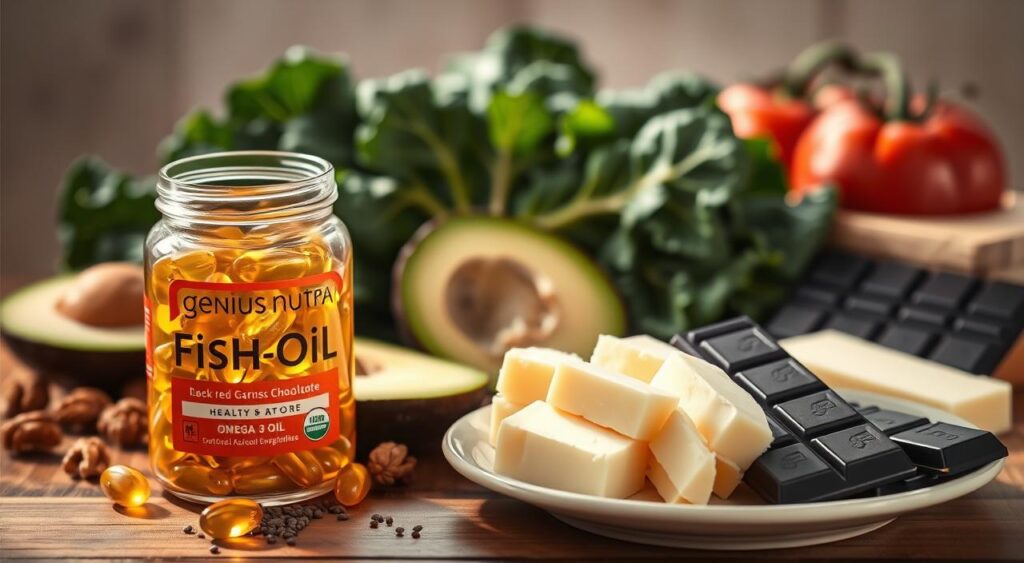
Enhancing Flavor Without Extra Calories
You can make your meals better without adding extra calories. The secret is using ingredients that taste great and are good for you. Try adding herbs, spices, citrus zest, and fermented foods to your dishes. This will make your food exciting and light.
Using Herbs and Spices Creatively
Herbs and spices add flavor without calories. Use fresh herbs like cilantro, parsley, or basil in salads. Spices like cumin, paprika, or turmeric can change your main dishes. These ingredients can make simple meals exciting and full of flavor.
Citrus Zest: A Flavor Booster
Citrus zest is a great way to add flavor without calories. Zest from lemons, limes, or oranges can brighten up salads, dressings, and marinades. It makes your meals taste fresh and bold, without needing extra fats or sugars.
Fermented Foods and Their Benefits
Fermented foods like kimchi, sauerkraut, or yogurt add unique flavors to your meals. They taste great and are good for your gut. Their tangy taste can make any dish exciting and healthy.

Using these techniques can make cooking more fun. By adding herbs, spices, citrus, and fermented foods, you can create delicious, light meals. For more ideas on improving your gut health with food, check out gut health breakthroughs that might inspire you.
Healthy Grains You May Not Consider
Many diets focus on rice and wheat, but there’s more to explore. Ancient grains like farro, teff, and buckwheat bring unique flavors and nutrients. Adding these to your meals can boost your health.
Farro: The Ancient Grain
Farro is a nutty grain that makes salads and sides tasty. It’s full of fiber and protein, helping with digestion and keeping you full. Try it in grain bowls or soups for a nutritious twist.
Teff: Tiny But Mighty
Teff is a small but mighty grain. It’s packed with calcium and protein, making it a key part of Ethiopian food, like injera. Its distinct flavor makes it great in porridge or baked goods.
Buckwheat Benefits
Buckwheat is gluten-free and offers many health perks. It’s rich in antioxidants and fiber, good for your heart and weight. Use it in pancakes, salads, or as a base for savory dishes.
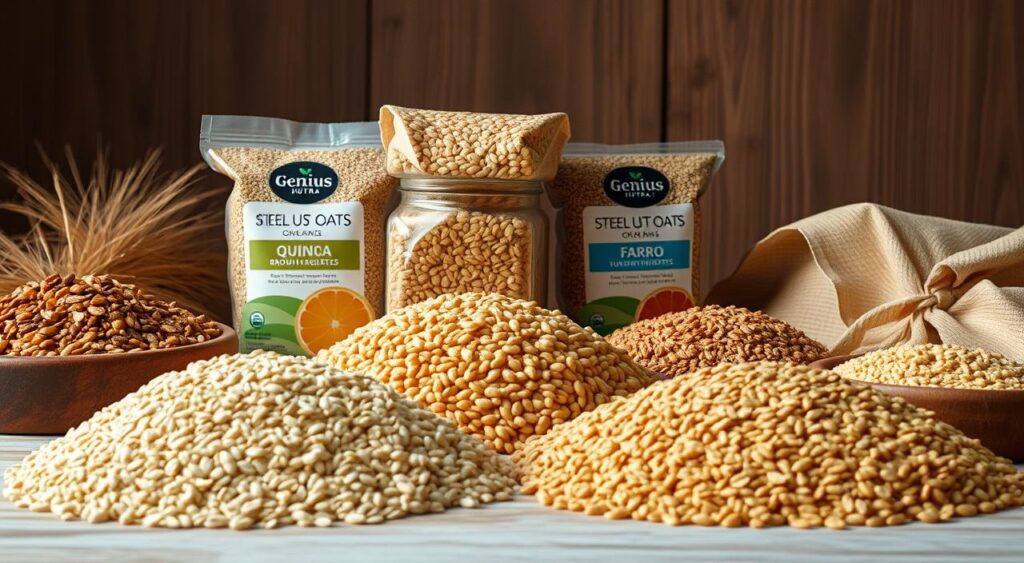
Protein Options Beyond Meat
Looking for protein options beyond meat can be exciting and tasty. Plant-based proteins are a great source of nutrition and add variety to your meals. Let’s explore some fantastic protein sources you might not know about.
Plant-Based Proteins to Explore
Plant-based proteins offer a wide range of choices. Lentils, chickpeas, and quinoa are all packed with nutrients. They’re great bases for many dishes and help keep your diet balanced without meat.
Edamame: A Simple Snack
Edamame is a tasty snack that’s high in protein and fiber. It’s a young soybean that’s perfect for a quick, healthy snack. Try steaming it and adding a bit of sea salt for a tasty treat.
Tempeh vs. Tofu: What’s the Difference?
Tempeh and tofu are both soy products with unique benefits. Tempeh is firmer and full of probiotics, making it a great fermented option. Tofu is versatile and absorbs flavors well, making it great for many recipes. Knowing the difference can help you choose the best protein for you.
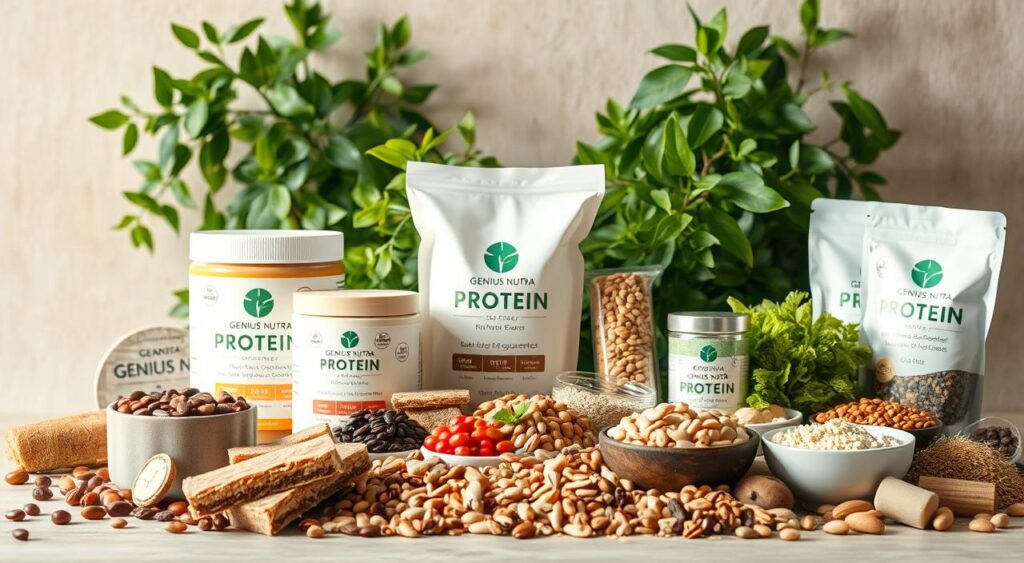
Innovative Breakfast Ideas for Energy
Start your day with a new breakfast idea. It can make your morning better. Try these tasty and nutritious options to fuel up.
Chia Seed Pudding Variations
Chia seed pudding is easy and full of nutrients. You need chia seeds, milk, and flavors like vanilla or cocoa. Here are some tasty ways to enjoy it:
- Berry Chia Seed Pudding: Mix chia seeds with almond milk and top with fresh berries.
- Chocolate Banana: Combine with cocoa powder and sliced banana for a sweet treat.
- Mango Coconut: Add coconut milk and diced mango for a tropical twist.
Savory Oatmeal Recipes
Make your oatmeal savory and satisfying. Add veggies and spices for a hearty breakfast. Try these recipes:
- Spinach and Feta Oatmeal: Cook oatmeal with spinach and sprinkle feta cheese on top.
- Tomato Basil Oatmeal: Add diced tomatoes and fresh basil for a refreshing flavor.
- Mushroom and Thyme Oatmeal: Sauté mushrooms with thyme and mix into your bowl for an earthy taste.
Breakfast Quinoa Bowls
Quinoa is a great protein-rich breakfast choice. It’s not just for lunch or dinner. Here are some breakfast quinoa ideas:
- Fruit and Nut Quinoa: Combine cooked quinoa with your favorite fruits and a sprinkle of nuts.
- Veggie Quinoa Bowl: Mix quinoa with sautéed vegetables and a poached egg on top.
- Cinnamon Apple Quinoa: Add cinnamon, chopped apples, and a drizzle of maple syrup for sweetness.
Hydrating Foods for Optimal Health
Keeping yourself hydrated is key for your health. Adding hydrating foods to your diet can make a big difference. These foods are not only thirst-quenching but also packed with nutrients. Here are some tasty ways to up your hydration game.
Watermelon Wonders
Watermelon is a top pick for hydrating foods. It’s about 92% water, making it super refreshing. Plus, it’s full of vitamins A and C, which are great for your health, even on hot days. Try adding watermelon to smoothies or enjoying it as a snack for a refreshing treat.
Cucumber Salads That Refresh
Cucumber salads are a light and hydrating choice. Cucumbers are mostly water, helping you stay hydrated. Mix them with tomatoes, onions, and a bit of vinaigrette for a tasty side dish. The crispness of cucumbers pairs well with herbs like dill or mint, adding flavor without extra calories.
Broth-Based Soups
Broth-based soups offer both warmth and hydration. Choose from chicken or vegetable broth for a nourishing meal. These soups are full of vitamins and minerals, helping you drink more fluids. Adding a bowl of soup to your meals is a great way to stay hydrated and feel full.
Smart Snacking Choices
Finding nutritious snacks can boost your energy and control hunger. You can enjoy tasty, healthy options. Try making your own snack bars, munching on roasted chickpeas, or pairing fruit with nut butter.
DIY Snack Bars You Can Make
Making your own DIY snack bars is a great mix of taste and nutrition. Use oats, nuts, and dried fruits to create bars. They offer energy without the sugars found in store-bought snacks. This way, your snacks are both a healthy treat and a quick energy boost.
Roasted Chickpeas: A Crunchy Delight
If you’re looking for something crunchy, roasted chickpeas are a great choice. Just toss chickpeas in your favorite seasonings and bake until crispy. They’re full of fiber and protein, making them a tasty and nutritious snack.
Nut Butter Pairings for Protein
Pairing fruit with nut butter makes a snack rich in healthy fats and protein. Try apple slices or banana halves with almond or peanut butter. This combo not only tastes good but also gives you important nutrients. Learn more about healthy snacks here.
Addressing Common Misconceptions
Navigating nutrition can be tough with many misconceptions out there. It’s key to know the facts for better diet choices. Learning about carbs, dairy alternatives, and the glycemic index can boost your health.
Carbs: The Good vs. The Bad
Carbs get a bad rap, but not all are bad. Simple and complex carbs differ. Good carbs, like whole grains and veggies, give you energy and nutrients. Knowing which carbs are good can help you eat better.
The Truth About Dairy Alternatives
Dairy alternatives like almond and oat milk are great for cutting down on dairy. But, always check labels for additives. Choose quality alternatives to get the most benefits without losing nutrients.
Understanding the Glycemic Index
The glycemic index shows how foods affect your blood sugar. Foods with lower scores keep your blood sugar steady. Knowing this can help you pick carbs that don’t spike your blood sugar.



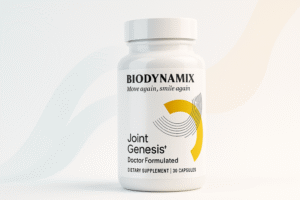








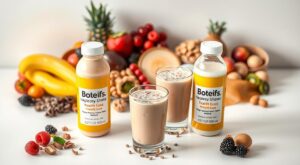
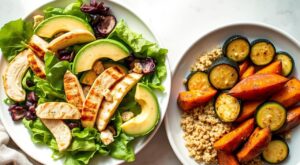

3 Responses